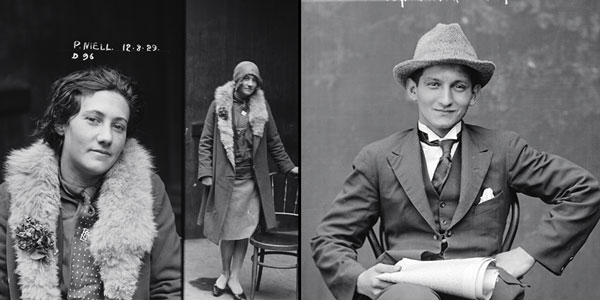NFC Lecture, The Scarlet Thread: Unravelling the Fabric of Crime

(L to R) Patsy Neill, 1929. Louis Henry ‘The Count’ Sterling, 1921. Courtesy of Justice & Police Museum, Sydney Living Museums.
On March 26, 2021, at 4 p.m., the Northrop Frye Centre (NFC) will be hosting its seventh annual Northrop Frye Centre Lecture, The Scarlet Thread: Unravelling the Fabric of Crime with Alison Matthews David (Ryerson University). Her latest project investigates the theme of crime and clothing as weapon, evidence, and disguise. View the presentation.
“The Northrop Frye Centre is proud to welcome back this truly interdisciplinary scholar,” says Robert Davidson, director of the NFC.
Matthews David’s talk will unravel how dress and accessories were used to commit and investigate crime from ca.1840-1940. To the detective Sherlock Holmes, a stained cuff or battered hat could reveal a man’s inner secrets and prove his guilt or innocence. Today’s TV series depict forensic experts identifying victims or convicting criminals based on a few fibers, a single footprint or a bloodstained shirt. Clothing can be the most important clue in a criminal case, but dress and accessories play a much more complex role in crime than these narratives suggest. “This project posits the dress historian as investigator, and I seek to sleuth out the central but complex role of dress and accessories used as weapons and protection, examined as forensic evidence, and as actors in the process of disguising and identifying individuals,” says Matthews David.
Matthews David is an associate professor in the School of Fashion and the graduate program director, MA Fashion, at Ryerson University. She has a PhD from Stanford University, has published on nineteenth-century dress and material culture, and launched the open access journal Fashion Studies with Ben Barry in 2018. Her most recent research project, Fashion Victims, looked at how clothing physically harmed the health of its makers and wearers.
“Garments, crime, detection? You can’t ask for more in a lecture!” says Davidson.
